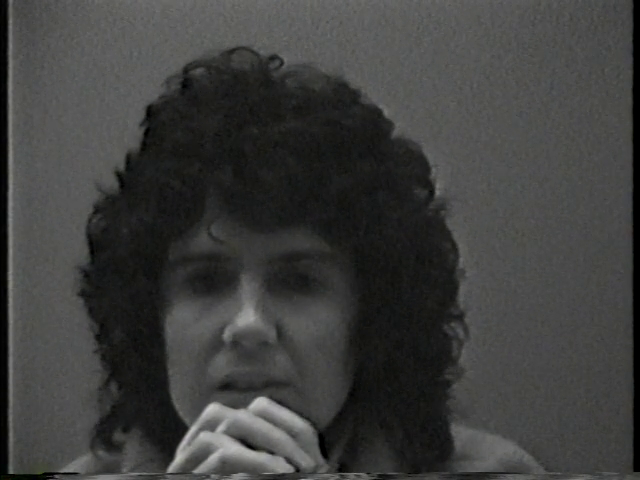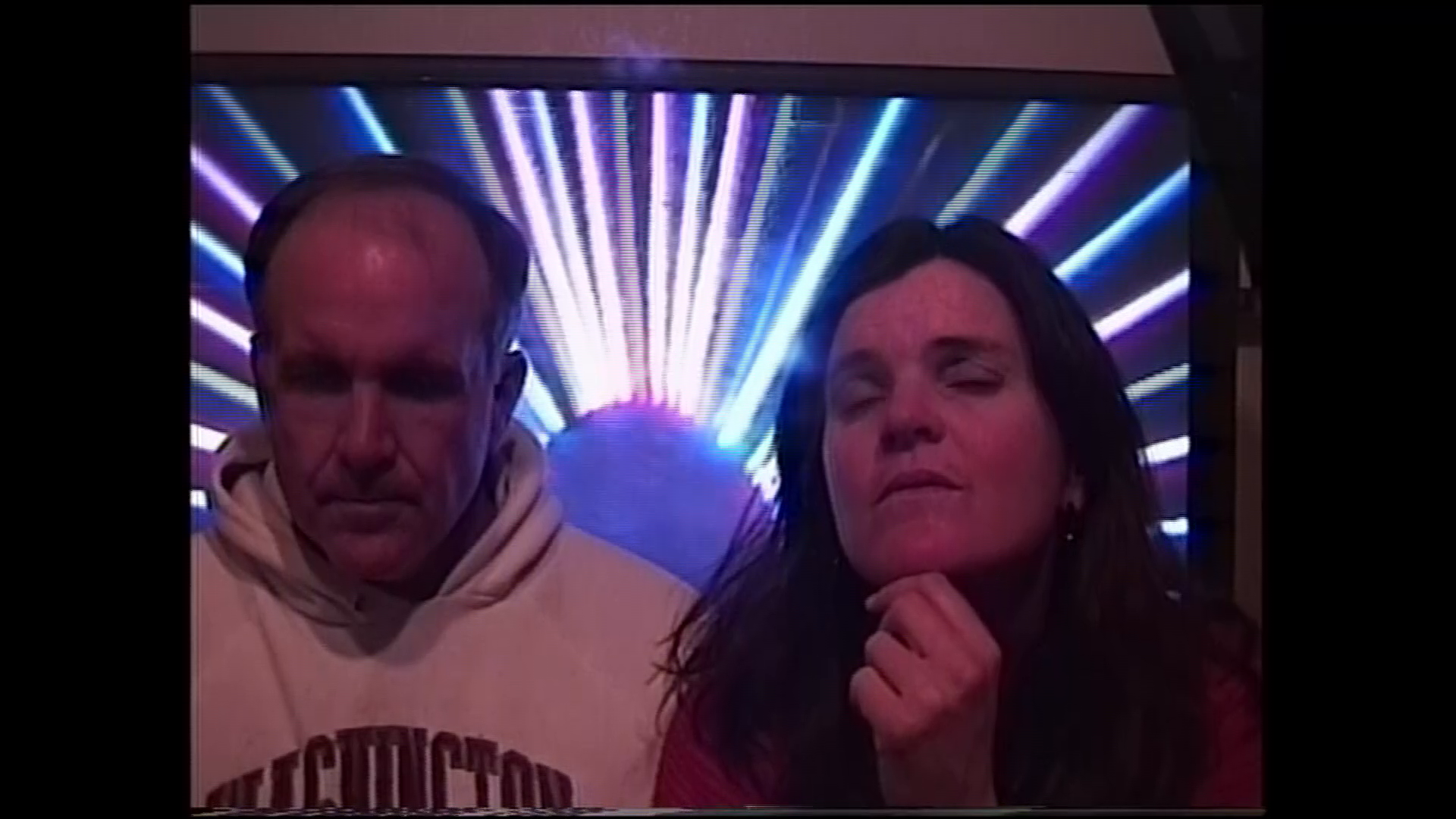A Love for the Ages
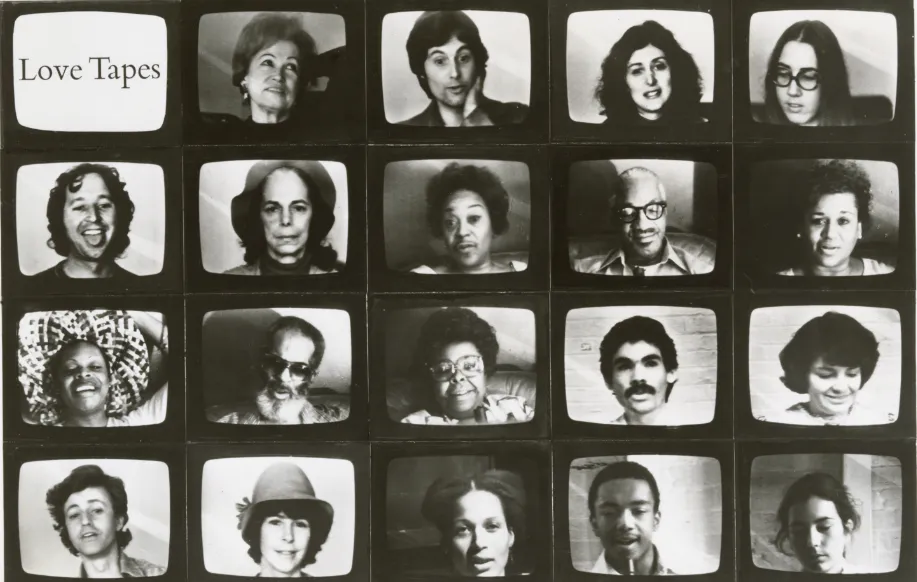
Ashton Leach
The Love Tapes are revolutionary by asking such a simple question: what is love? There have been countless narrative films about exuberant romantic love, or documentaries on people coming together for a common love, but there is little done that candidly tackles the massive yet significant question of what love is. This video project does not desire a definitive answer, but rather brings forth a better understanding for our fellow man. A couple in love compared to a mother and child experience the emotion so vastly differently, yet neither of the ways they feel it is wrong. When creating a tape, there are few limitations placed on the participants besides the three minute time frame, but even that could be expanded if a participant felt they had more to say. Every demographic was welcome to participate in the booth and there was no cost to do so, welcoming all people regardless of race, sexuality, gender, class, and age to share their unique position on the elusive emotion. Few other collections compare to the participatory scope of the Love Tapes, and such a vast diversity within its recordings offers not only a moment of insightful self-reflection but a hopeful chance to craft community and a sense of connectedness with the world.
This vastness of participants makes the tape collection an incredibly valuable source for researchers who are interested in the ways in which we express and document feelings of love. However, this vastness can at the same time be overwhelming. Clarke did not want to place any biases onto the way the tapes by having them organized in a particular thematic or identity-based manner, so instead, she kept the videos organized by the location at which they were filmed. Yet, when creating multiple series of love tapes, there was one category that Clarke relied upon again and again: age. Clarke explained that this division on age originally came about due to the location where the tapes were shot: kids typically exist in spaces with many kids, same with older adults. However, there were notable trends in how people of different ages talk about love. No group is more insightful than another, but what people choose to focus on shifts over time.
Participant’s names are not shared on the screen, nor is there an official list stating who each participant is in each series of Love Tapes, making it can be difficult to determine the exact age of the interviewees, but not impossible. Working with Wendy’s notes and release forms from each location, one is able to identify the age of many of the participants. However, this deep archival endeavor is not necessary, instead it is just as beneficial to listen to the tapes and work off of social cues mentioned in tapes by the participants to determine their age (such as mentions of retirement, grandchildren, mentions of school, and direct references to their age). This grouping does not intend to merely cluster similarly aged participants together and claim they all say the same thing—they do not—but, instead allows viewers to recognize these different phases of life and help us understand what different kinds of love we need at specific points, and perhaps more importantly, which innate ideas of love are essential to life, regardless of age.
"Maybe I… could… maybe love myself? Or maybe I could love my life?"
- Love Tapes Participant, Wadsworth Atheneum Museum of Art
Making up the smallest number of tapes, children under the age of 10 years offer explanations of love that, on the surface might seem short-sighted, but, when closely analyzed, offer salient insight into the experience of learning and sharing love early in life. The first theme that is often identified in videos of children’s reflection on love that is less present in older ages is a genuine connection and care for material things. Most often, when considering what they love, a child might include their favorite toy in the list. On the surface it seems juvenile, however when one considers the inclusion of that object in relation to the larger list, it becomes clear that a toy or stuffed animal can represent what love feels like.
Stuffed animals are typically presented to children as a form of solace—consider the commonality of children needing a specific stuffed friend to feel comfortable enough to go to sleep. In 1979 at the Wadsworth Atheneum Museum of Art in Hartford, Connecticut, a girl, no older than five, created her own love tape. While all the tapes are special, and their inclusion within the collection revolutionary, this specific tape is significant because of the sagacity of this young child. Her reflections on love change in quick succession over the course of three minutes, sometimes dropping a sentence in the middle to latch on to another fleeting idea of love. She begins by expressing her love for her stuffed animals, and a wide grin envelopes her face. Stuffed animals provide children with a sense of ownership and comfort in proximity—their physical closeness is one of the primary elements that make them loveable. When so young, you cannot expect for a small child who still has some much of the world to experience to expand upon the vastness of love. And that does not make their insights any less moving or insightful. Many children have to explain love through the miasma of their life, their personal interactions guiding their thoughts, meaning more intimate reflections make up the majority of their tapes.
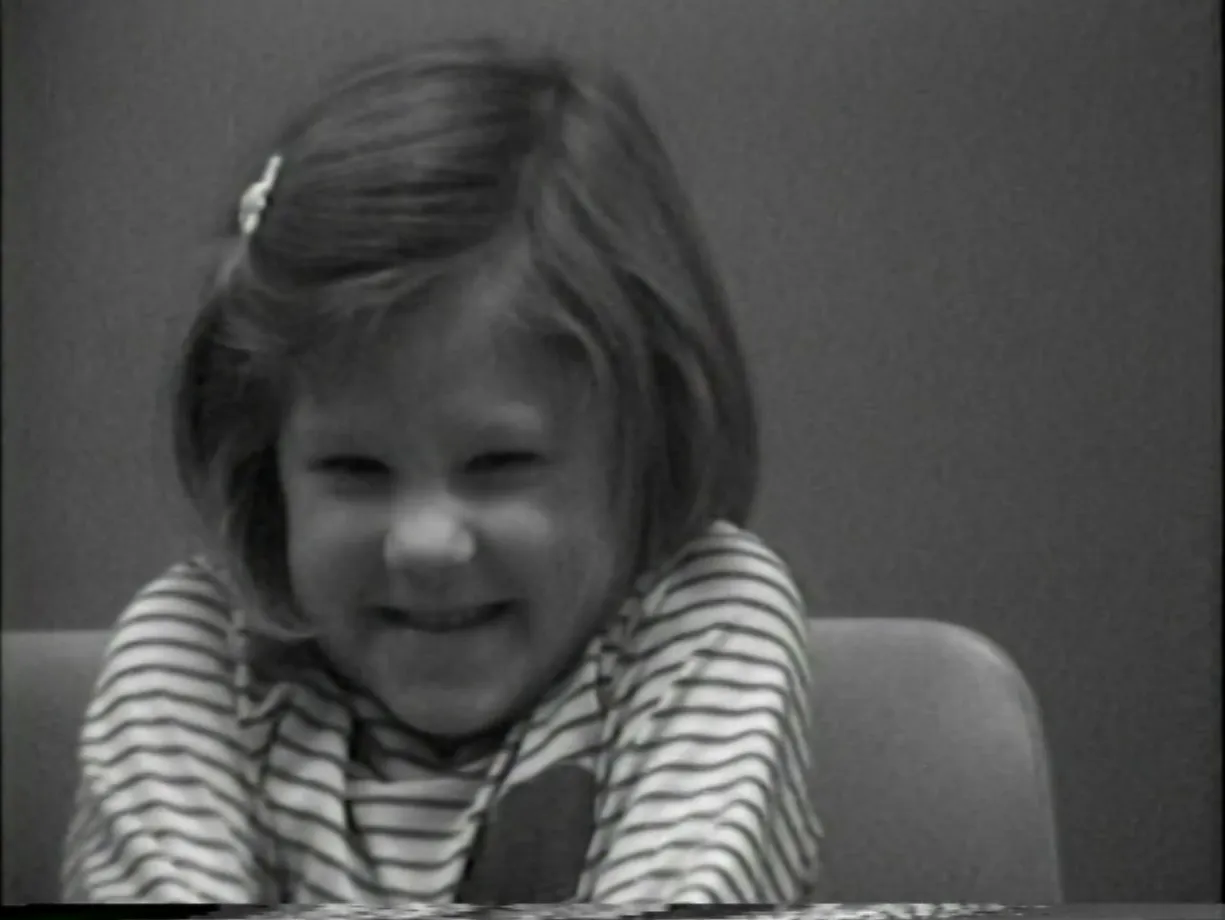
A young girl makes a Love Tape in 1979 at the Wadsworth Atheneum Museum of Art in Hartford, Connecticut
Her explanations move even closer as she continues to talk. She furrows her brow and processes how love moves beyond identification of comfortable experiences. Then, suddenly, there is a shift from the physical to the metaphysical. Spoken in choppy, drawn out thoughts, she states, “Maybe I… could… maybe love myself? Or maybe I could love my life?” This confusion of how one can experience loving oneself is present in many love tapes regardless of age, and feels monumental in every mention. The experience of practicing self-love can often mirror this child’s intonation—presenting the idea of loving oneself as a possibility, a question, rather than a hard, fast statement. Self-love remains a valuable topic regardless of age, and is often pushed for rigorously by older adults, pleading to their younger counterparts to start as early as possible. Geriatic participants expand upon these ideas of self love repeatedly, expressing often how their ability to share and receive love was greatly enhanced once they discovered how significantly they had failed to love themselves. These videos are often made by older women who reflect on the isolation and rejection they feel by larger society in their older age, resorting to loving themselves first, and from these realizing the power in love.
In Clarke’s At the Mall series from 1988, a woman reflects on the impact of Second Wave Feminism on her experience of loving. Like many other older participants, she contemplates how she has given love throughout her life: to her parents, to her husband, to her children, to her friends. Yet, she realized through the women’s empowerment movement that she had been holding onto deep resentments for much of her life as she moved through fulfilling expectations rather than desires. She explains, “ I used to think that I loved… and I realize, now, that I did not know how to do that. I did not start to learn how to do that until I was 60 years old… Now I’m 77, and I really know how to love.” It was at this point in her life, when children were adults and she had been with her husband for decades, that she felt she had time to focus on herself, and now at 77 she is loving more vibrantly than ever before. Self-love changed the way in which she interacted with the world, near and far. After releasing some deep-seated resentments, she recognized that love can be found everyday: in the smile offered to passing strangers on the street, in the eye contact and sincerity with familiar service workers at the store, or in the embrace of a friend calling just to say hello. It was clear to her that love was always around, she just had to be present and aware enough to accept it and return it.
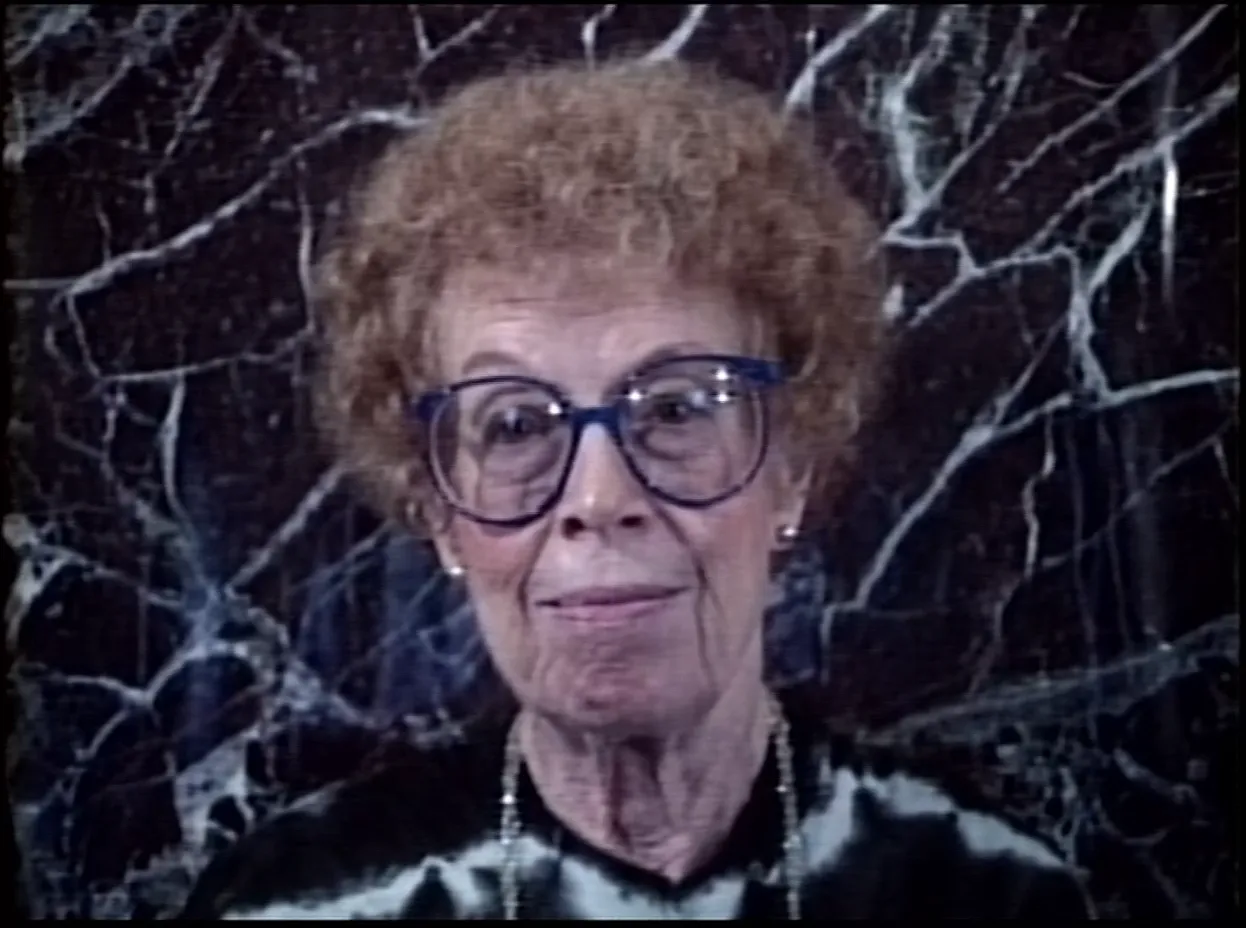
A woman records a Love Tape for Clarke's At the Mall series (1988)
This newfound love, reflective and ever-present, is tear-inducing and hopeful. Every word is spoken with a smile and excitement for the love to come. Though it is often a trope used to simplify older character, these pockets of lived wisdom are often sprinkled throughout the videos including older characters. They reflect on their own love, but at the same time look to inspire and guide viewers to not waste the time they did attempting to figure out what love is, but rather to start doing it as soon as possible. These profound messages do not mean that every element of the video has to be instructional or wisdom-filled– in this video alone she reflects on the love she has for sitting in the morning, reading about Snoopy in her newspaper– but it means realizing these small moments that seem trivial can be acts of love if you choose to recognize them as such.
While these videos highlight the age-outliers of participants from each end of the spectrum, they exemplify the similarities and differences we have with experiencing love due to different epochs in life. There are plenty of approaches that have attempted to understand what love is; however, the tapes do not work to craft a singular answer attempting to explain it for everyone. Instead, the Love Tapes give space for an infinite amount of answers to the question, holding them up and celebrating them equally, regardless of sexuality, race, and even age. No love tape is considered more valuable than any other, and they are meant to be experienced as a collective rather than searching for the perfect answer in the midst of the collection.
Ashton Leach is a Ph.D. student in Film in the Department of Communication Arts at the University of Wisconsin- Madison. Her prevailing research focuses on characterization in genre films, concentrating on aging and gender in film.
